5 de marzo 2024
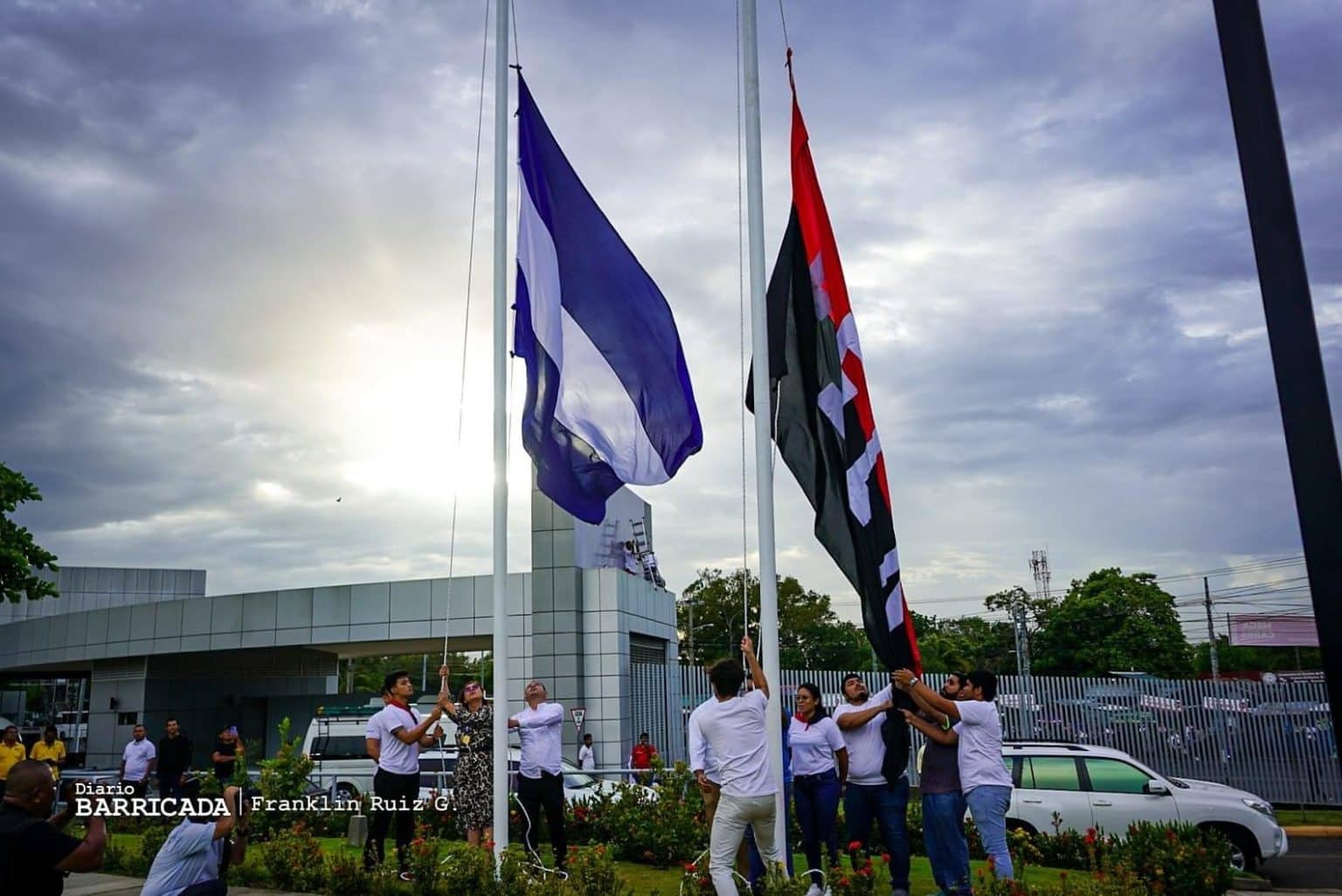
European Concern over Lack of Academic Freedom in Nicaragua

PUBLICIDAD 1M
PUBLICIDAD 4D
PUBLICIDAD 5D
More than 5,500 families from Costa Rica and Nicaragua fear eviction from the place where they lived for decades that was declared a wildlife refuge
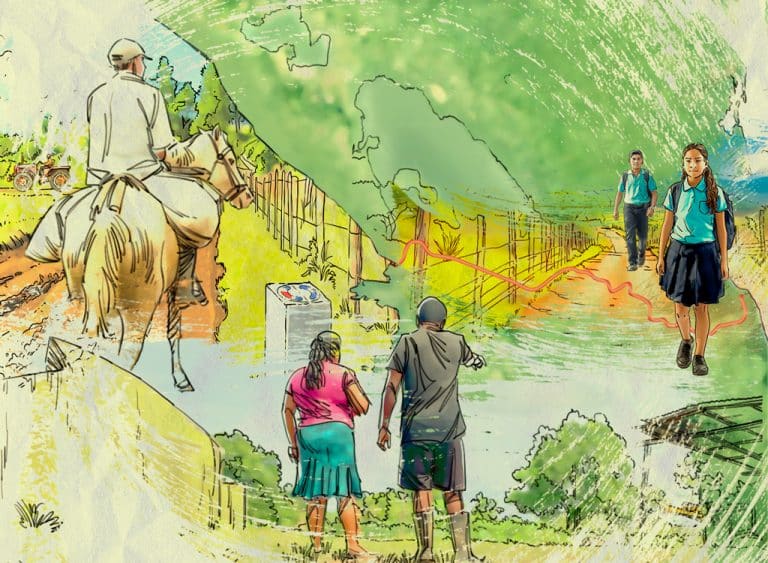
Ilustración: CONFIDENCIAL
Nicaraguans and Costa Ricans alike have inhabited Costa Rica's mile-wide northern border corridor since the beginning of the 20th century. Mainly farming, they have lived a peaceful, unchanged life, rooted from generation to generation, until a Costa Rican executive decree in 1994 turned the area into a wilderness refuge. That decision left residents in legal limbo and vulnerable to eviction from their homes. CONFIDENCIAL's Nicas Migrantes team visited the area, spoke with its inhabitants, and investigated the legal insecurity that affects the tranquility and rights of these cross-border binational villages.
***
María and Juan live in two countries at the same time. The Nicaraguan couple wakes up in their bedroom on Costa Rican soil, and they go out to the patio to drink coffee in Nicaraguan territory.
More than five decades ago, Maria's family settled there, and more than 30 years ago the couple inherited the land. On the Costa Rican side, the house is located in the community of Jomusa, in the Upala district in the province of Alajuela.
Some 5,500 families live in the so-called Costa Rican border mile in the northern part of Costa Rica, adjacent to Nicaragua. The land is separated by the line that divides the two countries, but the families coexist in cross-border dynamics: Nicaraguans and Costa Ricans work, study and carry out activities on both sides of the border, crossing without restrictions, without the need for a passport or a visa.
CONFIDENCIAL's Nicas Migrantes team visited the area, and when they spoke to its binational inhabitants, they found that for more than fifteen years, they have been living in fear of eviction from their lands located on the Costa Rican side because the northern border mile of Costa Rica was declared a National Wildlife Refuge, which outlaws the existence of human settlements. This declaration, however, came after families had already been settled there for decades.
The inhabitants spoke to Nicas Migrantes on condition of anonymity, because some have a tense relationship with the Nicaraguan military on the Nicaraguan side of the border, and prefer that the military not know their identities. They also fear recrimination and stigmatization from those who consider that they have no rights because they live in a territory that is in a kind of "legal limbo."
What is the border mile and the Wildlife Refuge?
Costa Rica has border corridors that are 1.2 miles (2 kilometers) wide along both the northern and southern borders of Costa Rica. "[They are] considered property of the State [that] cannot be acquired, appropriated or sold by private individuals, due to security and national sovereignty issues," says Edgardo Araya, an environmental lawyer and former Costa Rican congressman.
The northern border mile, where Juan and Maria live, covers part of the districts of La Cruz, Upala, Los Chiles, San Carlos, Sarapiquí and Pocococí. In 1994, the northern border mile was declared a National Wildlife Refuge by Executive Decree No. 22962-Mirenem, in order to safeguard a "very important biological corridor," as well as the tropical rainforest ecosystem present in this area.
The refuge covers a strip 1.2 miles (two kilometers) wide, extending from Salinas Bay on the Pacific coast to Punta Castilla on the Caribbean coast, and covers an area of almost 150,000 acres along the country's northern border, according to the decree.
Freddy Pacheco, a specialist in environmental impact studies, explains that in the 1990s, Costa Rica accelerated the establishment of conservation areas to protect its rich biodiversity. The National Wildlife Refuge was created along the northern border with the specific purpose of conserving the region's unique biodiversity, which involves the protection of natural habitats, wildlife species, and the promotion of scientific research, environmental education, and ecotourism in the area.
The decree was enacted without adequately considering the reality of the transboundary communities, says Alejandro Ubau, former mayor of Upala (2011- 2016), and educator at the National University. He adds: "It seems that the creation of the environmental corridor was based more on maps than on the reality of the communities that already inhabited the area."
The issue of the already existing communities is acknowledged by a 2017 bill that sought to give legal security to the settlers of the area who, according to the initiative, "are treated as squatters on the lands they have inhabited for decades and face increasing threats of eviction, even though they had inhabited these lands for many years before it was declared a refuge."
Some 5,500 families –approximately 22,000 people–, distributed in 45 communities in six districts, are affected by the legal change in the land they have inhabited, in some cases since the beginning of the 20th century, according to the inhabitants themselves.
The designation of the area as a Wildlife Refuge has brought conservation measures for flora and fauna, as well as regulations and restrictions on human activities within the refuge such as agriculture, cattle ranching, natural resource extraction, and urban development.
A large number of these families have been involved in agriculture. The decree that created the refuge in the area imposed a series of obstacles for their livelihoods. Juan comments that in the past they harvested much more than they produce today. Over the years, they have faced stricter regulations, such as restrictions on land use. They can only grow certain crops, and the use of agrochemicals is prohibited, which reduces their production.
Because the zone is officially government property, the settlers cannot obtain land titles. For a time, Juan says the concession rights regulated and supervised by the Rural Development Institute were enough for him to access bank loans to invest in his land. "Before, the bank even lent me up to 26 million colones (about $52,000 at the current exchange rate), which I used for planting and buying three tractors. But now I can't anymore," he explains.
Ubau confirms that the designation of the border corridor as a wildlife refuge nullified certain benefits for the settlers there, such as social projects, housing bonds and bank loans.
Since 2008, several resolutions of the Comptroller General's Office, rulings of the Constitutional Chamber, and the Environmental Administrative Court have ordered the cancellation of housing permits granted in protected wildlife areas and the eviction of their occupants, on the basis of human settlements not being allowed in wildlife refuges.
Pointing to his plot, Juan says: "If you ask me where my land ends, I can tell you that from here to there is mine. But if you ask me if I have any legal backing, I only have my rights of possession, which leaves me in a situation of constant anxiety."
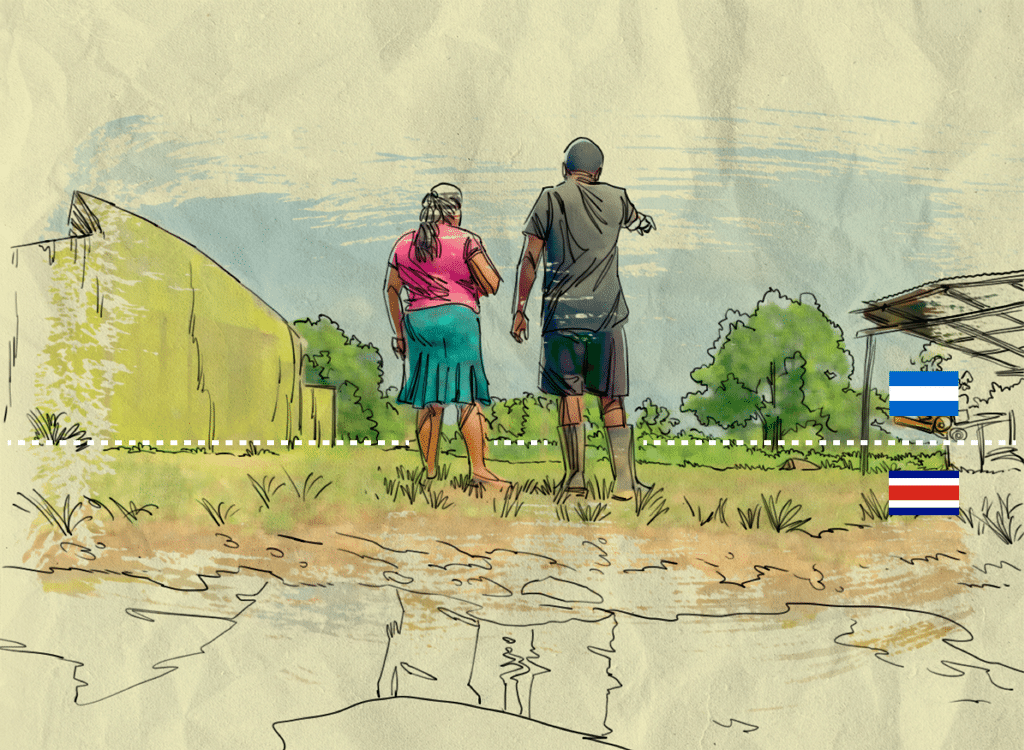
"Those of us who live in this area find ourselves in a precarious situation in terms of land tenure. We're under constant threat of being removed from our homes at any moment," claims Nelson Alvarez, a member of the Border Mile Committee, created in 2014 and which includes leaders from the affected communities in the corridor's six districts.
The lack of legal security in the border mile wildlife refuge communities significantly affects the quality of life of its inhabitants, agrees Ubau. The lack of land titles limits access to agricultural credit and the possibility of building or improving a home.
Nelson Álvarez
Member of the Border Mile Committee
We have not received any support, even in times of crisis and loss. For example, during Hurricane Otto [November 2016], the families who live within the border mile did not receive any of the aid that IMAS [Mixed Social Support Institute] distributed to those affected. We felt excluded from the country.”
Juan explains that currently, many border mile residents are forced to apply for informal loans with high interest rates in order to work. "They make our work more difficult, and our families and communities are poorer because we do not have access to bank loans," he laments.
Over the years, different governments have promised to provide a definitive solution to provide certainty for the permanence of these families on their land, but none has materialized.
One initiative, proposed in 2017, was the draft "Law to Establish a Special Legal Framework for the National Wildlife Refuge Northern Border Corridor," which sought to regulate territorial concessions, administrative authorizations, and coordination between institutions. However, the Attorney General's Office pointed out that the way the law was drafted presented "problems of legislative technique and possible constitutional conflicts."
Persistent demonstrations by residents of the area have led the Legislative Assembly to prevent evictions through the implementation of moratoriums, which are temporary measures that restrict or prohibit evictions for a determined period of time. The most recent moratorium was approved in mid-2021 for a period of three years, expiring in June 2024.
In January 2024, legislator Jose Pablo Sibaja presented a bill to establish a new moratorium for another three years, Costa Rican media reported. "The issue of the border mile and special zones must be solved now. We must bring peace and tranquility to hundreds of families. It's not right that thousands of men and women live in fear and uncertainty of being evicted from their homes," said Sibaja.
Costa Rican President Rodrigo Chaves has presented a possible way out of the uncertainty for these settlers. During his visit to Upala in November 2023, Chaves met with leaders of the Border Mile Committee and local residents. He promised them he would present a bill in August 2024.
Chaves' initiative would grant concessions on 1,340 acres of protected areas where the communities currently live so that they can continue to live without fear of eviction.
According to a press release from the President's Office of Costa Rica, the project is being carried out by the Ministry of Agriculture and Livestock, the Institute of Rural Development and the Ministry of Environment and Energy. They are conducting exhaustive topographical and environmental studies to determine the areas that can be concessioned, according to the official note.
The press release also indicates that these concessions would allow the inhabitants of the area to live and work on the land with legal security, and that they would have access to credit, public services and housing vouchers.
Pedro Quintana, a member of the Border Mile Committee, was present at the meeting with President Chaves and said that according to what was presented during the meeting, the concessions would initially be valid for 25 years and could be extended, as long as certain requirements are met.
There is no available information about the requirements because the bill has not yet been submitted to the Legislative Assembly. Attorney Edgardo Araya emphasizes that the lack of knowledge of the details of the bill makes it difficult to evaluate its viability.
Alvarez says that previous governments have presented bills to grant titles to people living within the border mile, but they have been declared unconstitutional by the Constitutional Chamber due to the special protection that this area has as governmental property.
Araya expresses concern that the bill Chaves will present may be playing with the hopes and expectations of the population.
Edgardo Araya
Environmental lawyer and former Costa Rican congressman
We need to analyze how this project differs from others that have been presented in the past, especially in terms of its constitutionality, and we need to conduct technical research to evaluate whether the proposed changes to the protected area could represent a setback in environmental terms."
Regarding the eviction of residents, Araya says that so far no such large-scale measure has been implemented in the northern border mile because of the complexity of finding an alternative for its residents.
In the meantime, residents are hopeful about the proposal to be presented by the current government, and demand that the studies to be carried out adopt an inclusive approach that looks out not only for the safety of the National Wildlife Reserve and the country's sovereignty, but also for the inhabitants of the land and their human rights.
"Without Costa Rican government guarantees of legal security, we will continue to live in uncertainty," says Juan. "I have spent my life here, working the land. That is why this bill fills me with hope, and I trust that we will be able to obtain the legal security we have been asking for."
Eviction would mean uprooting these families and ending the kind of cross-border life that has existed for generations.
Nicaraguans and Costa Ricans have mostly engaged in agricultural activities on both sides of the border. The Costa Rican government provides essential services such as schools and health centers for residents of the area, regardless of their nationality or which side of the border they live on.
Although born in Costa Rica, both Ubau and Alvarez are direct descendants of Nicaraguans who settled in Upala at the beginning of the last century.
Alejandro Ubau
Former mayor of Upala and educator
When my parents arrived, there were other fellow countrymen living here. This place has been our home and the place where binational families have lived in peace for decades."
Juan comments that the community has always supported each other, and that access to services, from one side or the other, has always been part of their daily life. "Often, pregnant women from the Nicaraguan side call me to take them to the hospital in Upala, since [getting to the] nearest hospital in Nicaragua involves crossing the lake [of Nicaragua]. Or people from here [Costa Rica] go to Nicaragua to see doctors there, because healthcare there is free or cheaper," he explains.
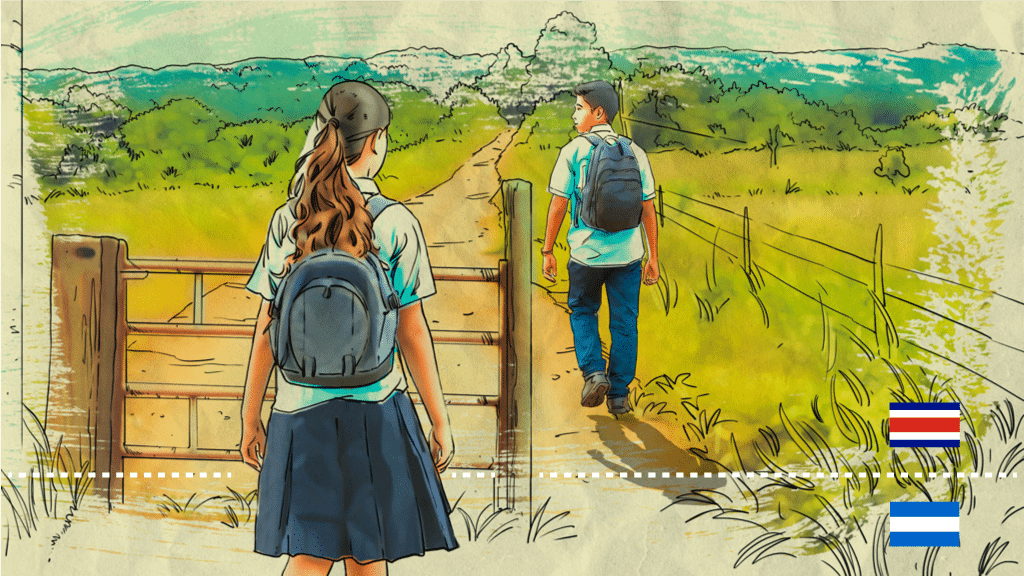
The same is true for Nicaraguan students who attend schools in Costa Rica because they are closer. "There [in Nicaragua] they must travel by boat or walk up to two hours in unsafe areas, but here there is even a bus that the schools in Upala provide so they can travel safely from one point to another," Juan continues.
Likewise, Costa Rican residents go to Nicaragua to buy household products or to cultivate plots of land. "Every day I cross [to Nicaragua] to work the land, because here the products for planting are more expensive and difficult to obtain. Plus, it's easy to find someone to rent you land, while here [in Costa Rica] they don't let you," says Manuel, a Nicaraguan who has lived in Costa Rica for more than five years.
In the La Raya community in Upala, people's main livelihood is commerce. There the commercial avenue is in Costa Rica, while the houses across that street are in Nicaraguan territory.
"We've been warned that they plan to build a wall to prevent Costa Ricans from buying from us, but they come here because their economy forces them to look for lower prices," says a local merchant. "For example," he says, pointing to a pair of pants, "these pants cost around 300 córdobas [around $8], while in Upala you wouldn't find a pair for less than 10,000 colones [around $20]."
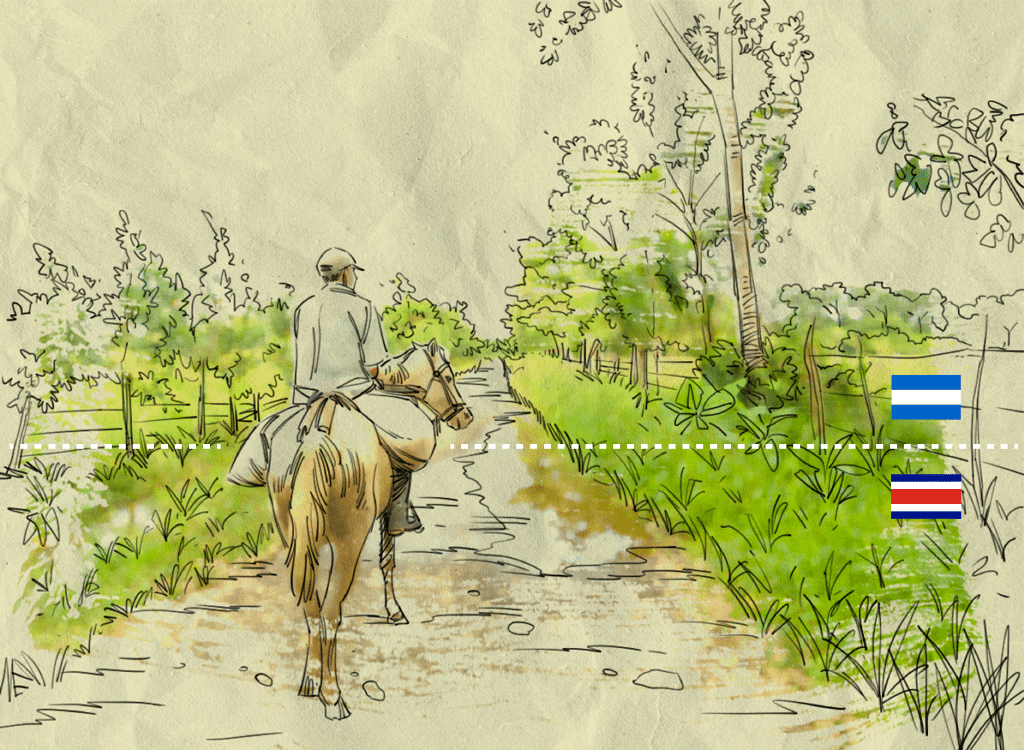
The 5,500 binational families living within the northern border mile are eager for a solution that will allow them to live in their homes without uncertainty, maintaining the peaceful coexistence and cross-border collaboration they have had for generations. "I grew up here, I fell in love, I raised a family," says Maria. "I would like my children to have the opportunity to decide whether they want to stay on these lands or not, without the fear of being expelled."

Nicaraguans and Costa Ricans living in the border mile fear losing their homes is a special report by CONFIDENCIAL's Nicas Migrantes team.
This article was published in Spanish in Confidencial and translated by our staff. To get the most relevant news from our English coverage delivered straight to your inbox, subscribe to The Dispatch.
PUBLICIDAD 3M
Periodista nicaragüense exiliada en Costa Rica. Se ha especializado en la cobertura de temas de migración, género y salud sexual y reproductiva. También ha trabajado en Marketing y Ventas y ha sido Ejecutiva de Cuentas.
PUBLICIDAD 3D